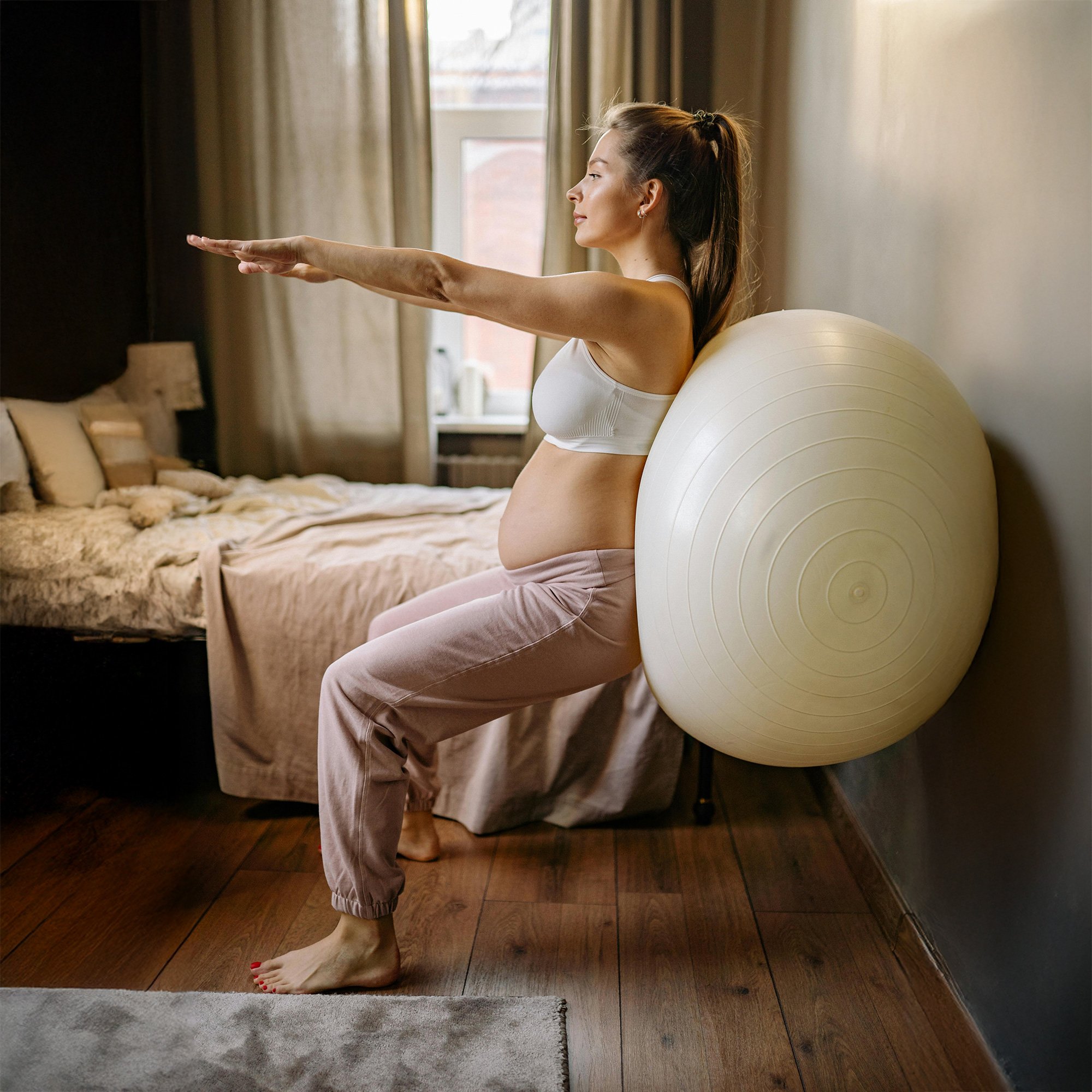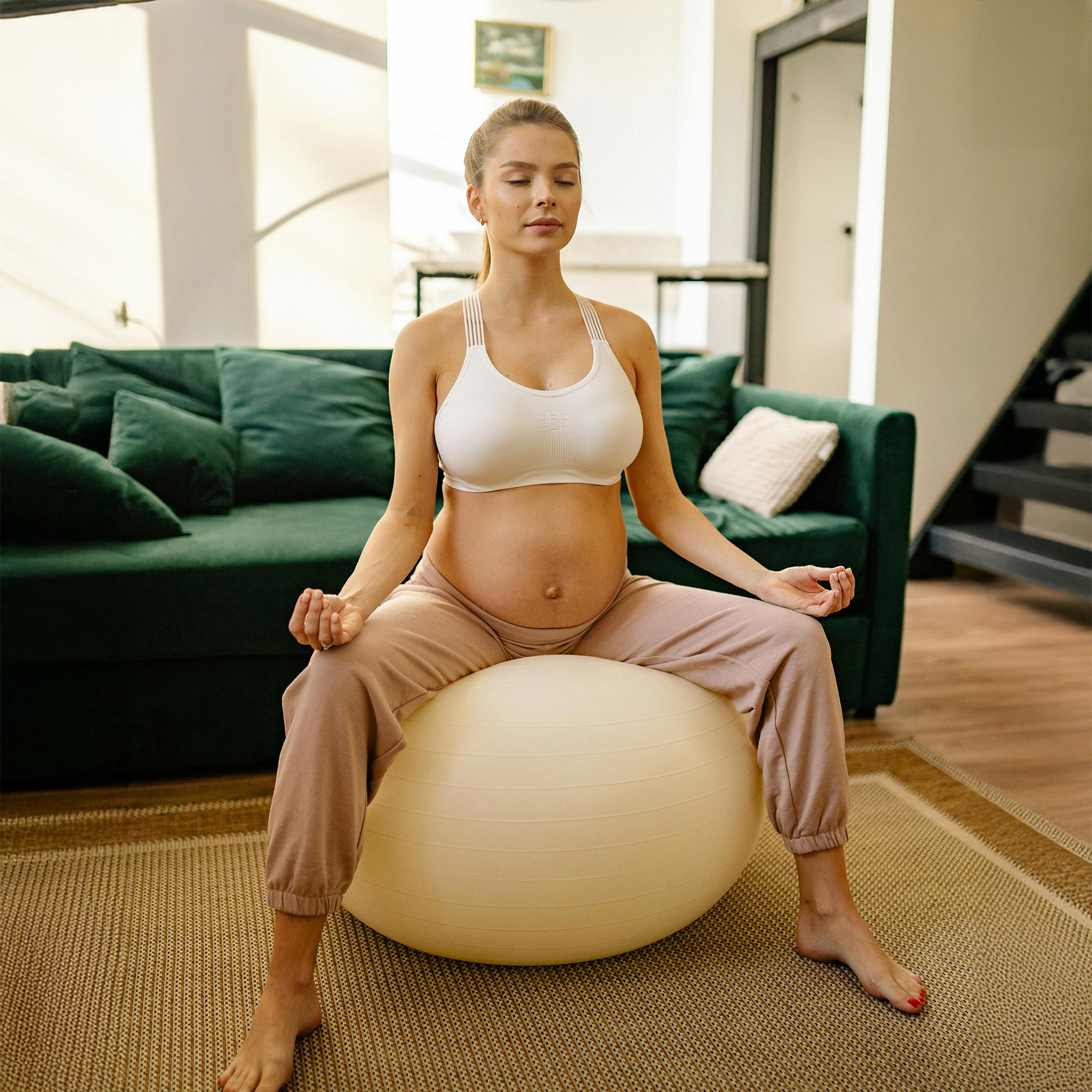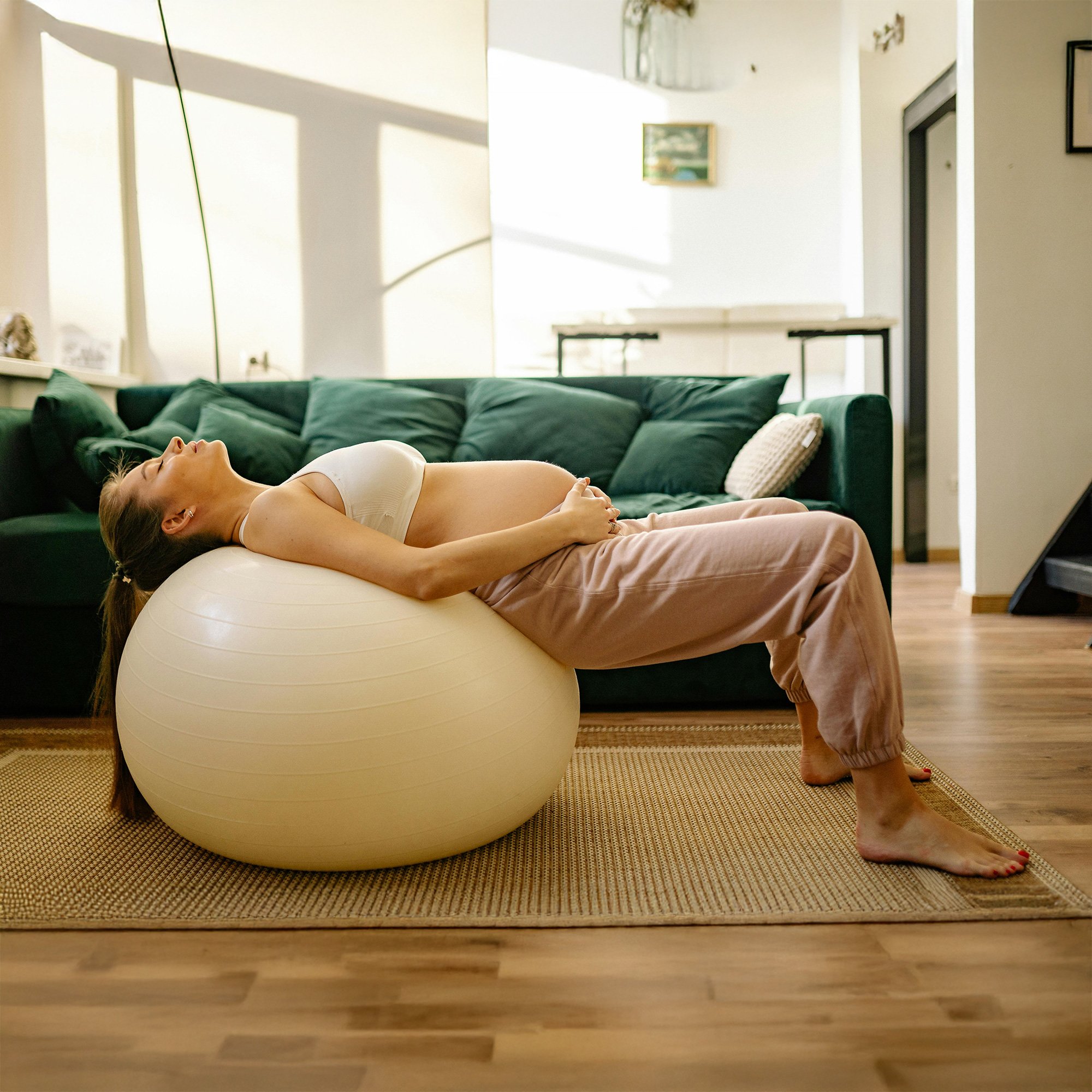How Birthing Balls Assist During Pregnancy & Labor
Pregnancy is a thrilling but sometimes difficult period, and many pregnant women seek means to alleviate pain and ensure an easier birth. One of the tools that has become popular in recent years is the birthing ball. This easy-to-use, inflatable ball has several advantages during pregnancy and labor, and it is a must-have for most pregnant women. In this post, we’ll dive into how birthing balls help in pregnancy and labor, explain how to choose the right one, and provide useful tips on how to incorporate them into your routine.
What is a Birthing Ball?
A birthing ball, or a fitness ball for pregnancy, is an inflatable exercise ball used specifically during pregnancy and labor. It is intended to offer comfort, aid in improving posture, and provide support to the body when sitting, lying down, or standing during pregnancy and labor. Although it appears to be just a normal exercise ball, maternity exercise balls tend to be bigger and constructed with tougher, anti-burst material so that they can endure the pressure and motion of pregnancy exercises.
Size is crucial when choosing a birthing ball. The correct size ensures you stay in the right posture and receive all the benefits of using the ball throughout your pregnancy and labor. The ball should be selected according to height, with smaller individuals usually preferring a 55cm/22 in ball and taller individuals preferring a 65cm/25in or 75cm/30in ball.

A general rule of thumb to use when figuring out the right size are:
If you are under 5'4" (162 cm), a 55 cm/22in ball is commonly suggested.
If you are between 5'4" and 5'10" (162-178 cm), a 65 cm/25in ball is typically a good size.
If you are over 5'10" (178 cm), a 75 cm/30in ball is suggested.
Advantages of Having a Birthing Ball During Pregnancy
Adding a pregnancy bounce ball to your daily life can provide numerous benefits. These easy exercises can make you feel more comfortable, enhance posture, and even ready you for an easier birth.
1. Improved Posture and Comfort
Back pain and aching during pregnancy are common among many women as the baby grows and your posture changes. Sitting on a birthing ball promotes good posture, which can help relieve the strain on the lower pelvis and back. When you sit on the ball, you engage your core as you balance, so you can avoid the pressure that accumulates from sitting for long periods of time, as well as assist your body in adapting to its new shape.
Regular use of a birthing ball can decrease back pain, pelvic pain, and strain on your spine by offering a more supportive, dynamic sitting position.
2. Pelvic Floor Preparation
One of the most important advantages of exercising with a maternity exercise ball is pelvic floor muscle strengthening. These muscles are essential to use during delivery, and toning and flexing them can result in a smoother, more effective birth. Mild exercises on the birthing ball, such as bouncing or rocking, engage pelvic muscles, enhancing flexibility and strength in the area.
Moreover, sitting on a birthing ball can condition your pelvic floor muscles to the stress of labor, which might decrease complications during delivery and encourage faster recovery post-partum.
3. Facilitating Optimal Fetal Positioning
A well-positioned baby can make a significant difference in labor. Utilizing a fitness ball during pregnancy can assist in promoting optimal fetal positioning, particularly in the second half of pregnancy. By doing gentle exercises such as rocking or leaning forward on the ball, you can open up your pelvis and nudge the baby into the optimal position for birth.
This may assist in decreasing the risk of complications, including breech presentation, and perhaps reducing the duration of labor by enabling the baby to move more easily into the birth canal.
How Do You Select a Birthing Ball?
Selecting a proper birthing ball can make a big difference during your pregnancy. Here's what to look for when picking a birthing ball for pregnancy:
- Size: Use a ball appropriate to your height for comfort and efficiency. Choose a 55 cm ball if under 5'4", a 65 cm ball if 5'4"-5'10", and a 75 cm ball if over 5'10.
- Material: Opt for an exercise ball of maternity grade using anti-burst material, hence no fear of accidents when it is in use. A bigger ball is more stable.
- Inflation: Ensure the ball is well inflated. You want firm enough for support but soft enough for comfort.
- Weight Capacity: Ensure the proper weight capacity to ascertain that the ball can support your weight safely during your pregnancy.
Using a Birthing Ball During Labor
A pregnancy bounce ball can also be a valuable instrument during labor. It provides support and pain relief, all while facilitating labor advancement.
Pain Relief and Comfort
Childbirth can be physically taxing, but pregnancy ball use can bring relief. Bouncing, rocking, or sitting on the ball enables you to discover comforting positions while minimizing strain on your lower back. These motions also tend to relieve discomfort by stimulating relaxation in the muscles of the pelvis.
The subtle rolling motion on the birth ball can simulate the calming action of a massage, inducing relaxation throughout contractions and assisting you in retaining control over your body throughout the birthing process.
Assisting Labor Progression
Employing a birthing ball to stimulate labor can also accelerate the labor process. Sitting on the ball or bouncing lightly can encourage pelvic mobility, which makes it easier for the baby to move into the birth canal. These actions help to open up the pelvic region, making labor easier and possibly reducing the delivery time.
The motions on the ball promote natural contractions and enable your body to prepare for delivery in a more gradual, controlled way.
Recommended Birthing Ball Exercises
Some of these easy and effective exercises you can do with your maternity exercise ball to derive maximum benefits from your pregnancy regimen are:
Gentle Bouncing
The gentle ball bounce is one of the simplest and most effective exercises. It relaxes the muscles in your pelvis, brings more circulation to the area, and takes pressure off your back. You can bounce slowly for a few minutes at a time, which will ease your discomfort, particularly in late pregnancy.
Hip Circles and Rocking
Hip circles and rocking on the ball are effective in opening up the pelvis and lower back to enhance flexibility. Rocking and circles with the hips promote movement of the pelvic area and ease tension or stiffness that arises due to pregnancy. Slowly rocking from side to side or small circles with your hips will open the pelvis and get your body ready for labor.
Leaning Positions
Sitting or kneeling and leaning forward on the ball is a wonderful way to take pressure off the back. This position uses gravity to assist the baby into place, facilitating descent and opening up the pelvis. It's also a nice way to unwind and let tension go between contractions.
Safety Considerations
While using a birthing ball can provide great benefits, it’s important to follow safety guidelines to ensure you and your baby’s well-being.
Choosing the Right Size and Quality
Make sure to select a birthing ball that is the right size for your height and weight. Additionally, it’s essential to pick one that’s made of durable, anti-burst material to avoid accidents. Always ensure that the ball is properly inflated to provide proper support and comfort.
Proper Usage Guidelines
Use the birthing ball on a non-slip surface, such as a yoga mat or carpeted area, to avoid slipping. If you’re in the later stages of pregnancy, consider using the ball under the guidance of a healthcare provider to ensure you're using it correctly.
Conclusion
Birthing balls, or pregnancy bounce balls, are a valuable tool for improving comfort, preparing the body for labor, and even aiding in the delivery process. With proper use, a fitness ball for pregnancy can help alleviate discomfort, promote better posture, and support pelvic floor health during pregnancy. It can also assist with labor progression and pain management during delivery.
Before incorporating a birthing ball into your routine, it’s important to consult your healthcare provider to ensure you’re using it safely. With the right ball and exercises, you’ll be better prepared for the physical demands of pregnancy and childbirth.
FAQs
What is a birthing ball used for during pregnancy?
A birthing ball helps improve posture, relieve back pain, strengthen the pelvic floor muscles, and encourage optimal fetal positioning, making it a valuable tool during pregnancy.
Can a maternity exercise ball help induce labor?
Yes, using a yoga ball may help induce labor through gentle bouncing, rocking, or leaning forward. It can encourage pelvic mobility, promote contractions, and assist in labor progression.
What size birthing ball should I use during pregnancy?
The size of the fitness ball for pregnancy depends on your height. Typically, 55cm is suitable for shorter individuals, while 65cm or 75cm is better for taller women.
Is it safe to use a birthing ball during pregnancy?
Yes, a birthing ball is safe when used correctly on a non-slip surface. Be sure to use an anti-burst ball and consult your healthcare provider for guidance, especially in the later stages of pregnancy.
How do I use a birthing ball to relieve back pain?
Gentle bouncing, rocking, or sitting on the ball in a relaxed position can help relieve back pain by promoting better posture and alleviating pressure on the spine.

